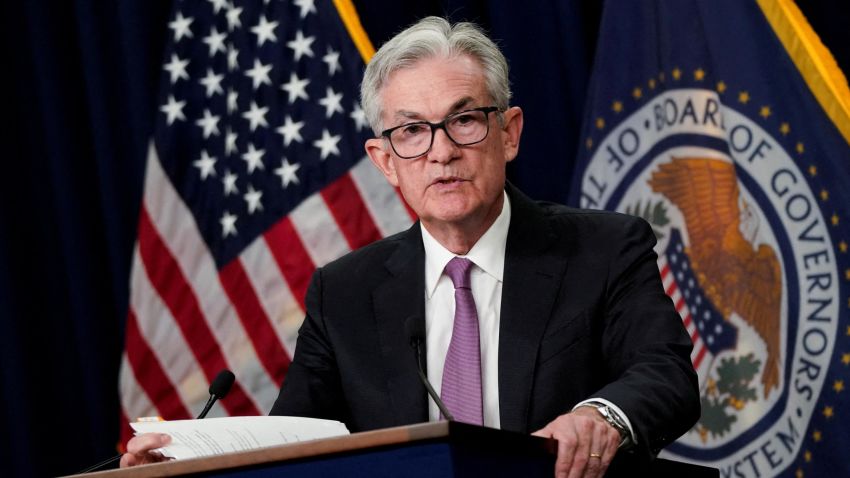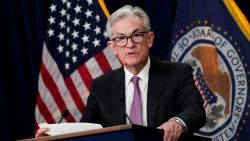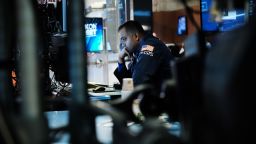Jerome Powell and other members of the Federal Reserve are obsessed with choking off inflation once and for all, even if the Fed’s series of aggressive rate hikes slow the economy to a crawl. That could be bad news for consumers, investors and Corporate America.
What’s more, many market experts and economists note that the rate of inflation, while still uncomfortably high, is falling and should continue to decline – but there is a noted lag effect. Fed vice chair Lael Brainard admitted as much in a speech Monday, saying that “policy actions to date will have their full effect on activity in coming quarters.”
Still, the Fed isn’t done raising rates. Investors are pricing in the strong probability of a fourth consecutive three-quarters of a percentage point hike at the Fed’s next meeting on November 2. And the chances of a fifth straight hike of that magnitude at the Fed’s December 14 meeting are also on the rise.
It seems that Powell wants to atone for his mistake of repeatedly calling inflation “transitory” for much of last year. So the Fed is going to keep raising rates to prove that it is taking inflation seriously, even if that leads to a bigger pullback in stocks…and tipping the economy into a recession.
Needless to say, that’s a problem. Especially since the Fed has two mandates: price stability and maximum employment. That means the jobs market might get hit due to the Fed’s laser-like focus on inflation.
“My concern is that the Fed is tightening so quickly and so significantly without knowing what it means for the economy,” said Brian Levitt, global market strategist with Invesco.
Keep in mind that the Fed’s series of rate hikes are unprecedented in the “modern” era of central banking, i.e. after Alan Greenspan became Fed chair in 1987 and the Fed became far more transparent.
The Fed was far more opaque before Greenspan, and the market didn’t pick apart every speech, policy move and economic forecast the way Wall Street does now. Inflation in the 1970s and early 1980s was also a much different animal, due largely to an oil price shock that lasted years because of a supply shortage.
Inflation wasn’t transitory…but price pressures are finally abating
The current inflation crisis stems from more temporary (we won’t say transitory) supply chain issues tied to the pandemic as well as the rapid reopening of the global economy following a brief recession.
But the economy is now showing cracks. Long-term bond yields have surged, and mortgage rates have popped, cooling off the housing market. The stock market has deflated as well, wringing even more excess from the economy.
“We’re more cautious because the Fed is tightening into a weakening economy,” said Keith Lerner, co-chief investment officer and chief market strategist with Truist Advisory Services. “These supersized hikes are the most aggressive in decades. But the Fed has scar tissue from inflation.”
As painful this current bout of inflation is for Americans, it’s nothing compared to what people lived through in the early 1980s before then Fed chair Paul Volcker squashed inflation with a series of massive rate hikes.
Unless pricing pressures pick up again, it appears the year-over-year increase for the consumer price index (CPI) peaked at 9% in June. That’s a big move from about 2.3% in February 2020 just before the pandemic shutdown. But 9% is still a far cry from the CPI high during the Volcker years of 14.6% in early 1980.
And with consumer and wholesale prices already edging lower, some experts worry that the continued uber-hawkish stance by the Fed will do more harm than good for the economy.
“The speed at which the Fed is increasing rates will certainly have some unintended consequences,” said Michael Weisz, president of Yieldstreet, an investment firm that specializes in so-called alternative assets such as real estate, private equity, venture capital and art.
Rate hikes will eventually slow economy and hurt job market
Weisz said the surge in interest rates could lead to a “consumer credit crunch being more pronounced,” in which loans beyond mortgages might become more expensive and harder to get.
Rate hikes raise the costs for companies to pay down their debt, increasing the possibility of corporate bankruptcies and defaults on commercial loans. It may even potentially lead to stagflation…the double whopper of stagnant growth and continued inflation. In other words, prices may remain high and the job market will probably be worse.
“The Fed runs a real risk of over-tightening, as the impacts of the restrictive policy may not flow through inflation and unemployment data until it’s too late,” Weisz added.
As long as inflation remains the bigger issue for the economy, the Fed is going to focus more on getting prices under control. After all, the unemployment rate is at 3.5%, a half-century low.
“The Fed has made it clear their number one priority right now is price stability,” said Dustin Thackeray, chief investment officer of Crewe Advisors. “Until the Fed sees sustained evidence their monetary policy is having a material impact on…the job market, they will maintain their persistent efforts in reining in inflationary pressures.”























